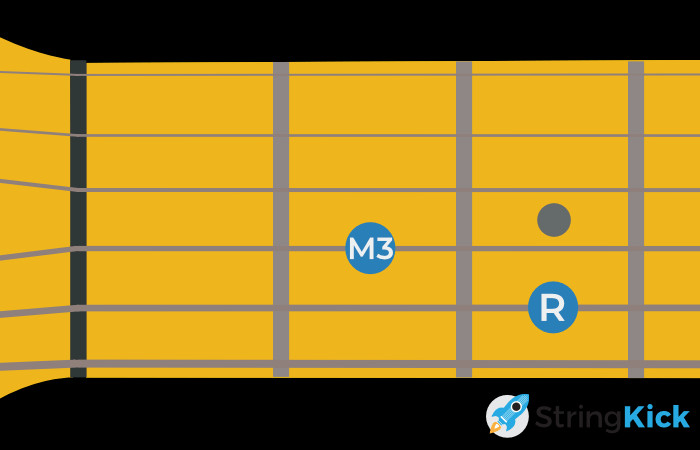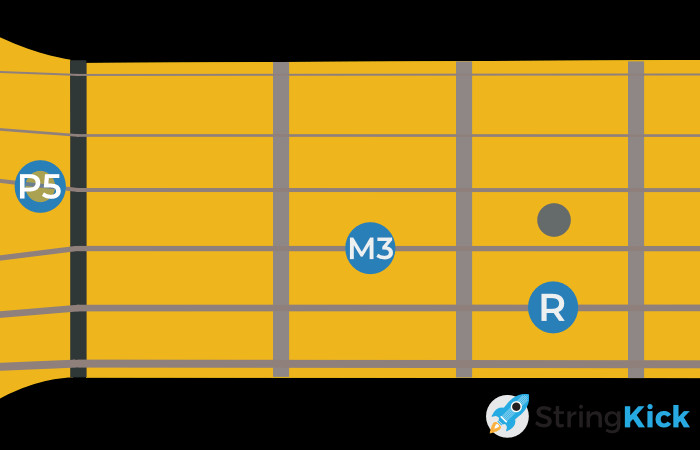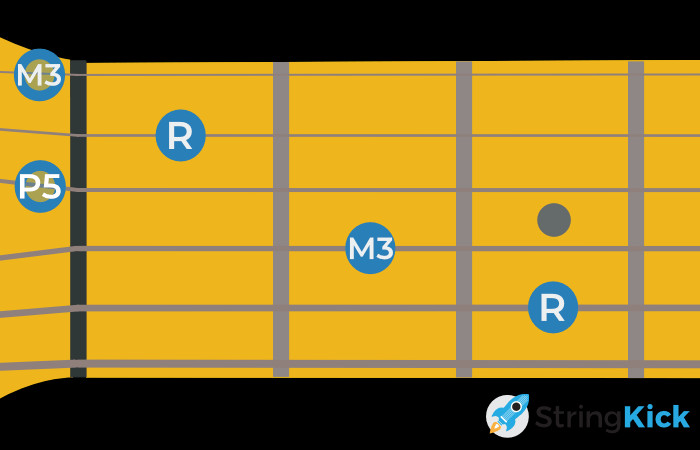So, you’ve learned what Guitar Intervals are and how to identify them on your fretboard. But a crucial question remains: how can we actually use this knowledge? What’s the practical application of guitar intervals for guitar players?
The truth is, understanding guitar intervals is fundamental. They are the very building blocks of music. Mastering intervals is the key to unlocking a deeper understanding of everything from chords and scales to crafting compelling chord progressions and melodies.
To truly grasp the power of intervals, let’s dive into a practical example. We’ll explore how interval knowledge demystifies chord construction. Now, if you’re completely new to intervals, don’t worry if all the nuances of this explanation don’t immediately click. The main takeaway here is to see how intervals serve as the foundational recipe for building chords.
As guitarists, we know that chords aren’t monolithic; they come in various “types,” each with its own emotional flavor. Some chords resonate with happiness and upliftment, while others evoke sadness or introspection. What dictates this “mood” of a chord? The answer lies in its interval recipe. Each chord type is defined by a specific combination of intervals relative to its root note. Take the major chord as an example. Its recipe is elegantly simple:
- Root note
- Major third
- Perfect fifth
Let’s see this recipe in action on the guitar fretboard and construct a C major chord using our interval knowledge.
We begin with the root note. This is the anchor of the chord, the note that gives the chord its name. For our C major chord, naturally, the root must be C. We’ll locate it on the 3rd fret of the A string.
This root note is our starting point, the foundation upon which we’ll build the rest of the chord. From this C, we’ll add the other “ingredients” dictated by our major chord recipe.
First, we need to add a note that is a major third interval higher than our C root note.
 Guitar fretboard showing C root note and major third interval for C major chord construction
Guitar fretboard showing C root note and major third interval for C major chord construction
Next, our recipe calls for a note that’s a perfect fifth interval above the root note:
 Diagram of guitar fretboard illustrating C root, major third, and perfect fifth intervals forming a C major chord
Diagram of guitar fretboard illustrating C root, major third, and perfect fifth intervals forming a C major chord
And there you have it! Play these three notes together, and you’ve created a C major chord.
Now, you might be thinking, “Wait a minute, that’s not how I usually play a C chord!” And you’re absolutely right. We commonly use more strings when playing a C chord in open position. However, those additional strings aren’t introducing new interval “ingredients” into our chord recipe; they’re simply reinforcing the ones we already have. Let’s examine this:
 Open C major chord on guitar fretboard with highlighted root, major third, and perfect fifth intervals, demonstrating chord structure
Open C major chord on guitar fretboard with highlighted root, major third, and perfect fifth intervals, demonstrating chord structure
As you can see, those extra strings in the open C chord position are just doubling up on our root note and major third intervals, just at higher octaves. They are the same core ingredients, presented in a fuller voicing.
So, as we’ve seen, guitar intervals are instrumental in understanding chord construction. But their utility extends far beyond just chords. Intervals are equally crucial for deciphering melodies, understanding scales, and constructing compelling chord progressions.
To explore how intervals illuminate the structure of melodies, check out the free sample version of Music Theory from Scratch.
In this resource, you’ll not only learn to play several essential intervals but also discover how to apply this knowledge to analyze and understand a simple guitar riff. You’ll then see how music theory, rooted in intervals, can guide you to modify and enhance that riff, making it sound even better.
Get your free interval lessons now!
“I took your free interval course and learned more about theory in 5 minutes than in a year. The way you explained things just clicked for me.”
Miranda
One important question remains: what’s the most effective way to learn and internalize guitar intervals? We’ll address this in the upcoming final section.
